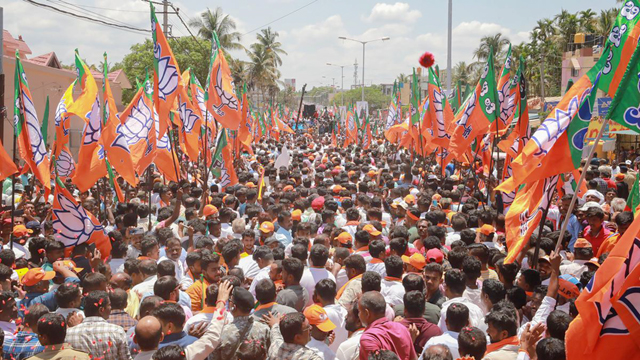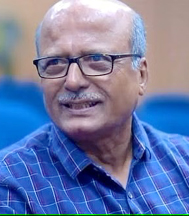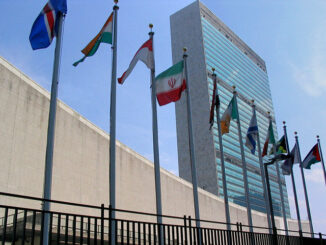
There is a redrawing of the political contours of the political parties in Karnataka — a shift that will have bearing on the future of electoral democracy in India

The electoral arena in Karnataka in the run-up to the State Assembly elections 2023, on May 10, has turned out to be a battleground that is outpacing any other in living memory. There are many reasons being advanced for this: Karnataka has been the steppingstone of the Bharatiya Janata Party (BJP) to South India and needs to be retained at all costs; the State is an economic powerhouse, particularly in new technologies; there are elections to important States as well as to Parliament in the offing.
The Congress Party has a well-tested and rooted leadership in the State apart from the fact that Mallikarjun Kharge, the recently elected all-India Congress President, hails from the State. The Congress’s electoral prospects, elsewhere and hereafter, may be crucially dependent on this election. The Gandhi family in general, and Rahul Gandhi in particular, enjoy great moral standing in the State, with Mr. Gandhi’s Bharat Jodo Yatra adding to this.
The Janata Dal (Secular) led by H.D. Deve Gowda, the former Prime Minister of India, is a local brew of a farming community, a dominant caste and with embedded memories of pluralism cohabiting a region. There is some truth in all these narratives. But there are also ideological contestations behind the escalating rhetorical flourish, biting satire, lampooning of opponents, and promises of freebies. These contestations are redrawing the political contours of the political parties in the fray, particularly the BJP and Congress, and this shift would have an important bearing on the future of electoral democracy in India, including the idea of progress.
Ideological overdrive
While the BJP has scored much success in Karnataka’s electoral politics in the last two decades, its Hindutva project has not advanced at the same pace. This is in spite of the sporadic spectacles on love-jihad, Tipu Sultan, the hijab issue, cow slaughter, and religious conversions.
As a strong avowal of common descent and cultural belonging (in Savarkar’s words, pitrabhu and punyabhu), Hindutva elicited some support in certain pockets of present-day Karnataka from early on. While a few in the Bombay-Karnataka region (now called Kittur Karnataka) too were attracted by it, most of the educated Lingayats of the region came to define themselves vis-à-vis Brahmins. A significant section of them were influenced by Jotirao Phule’s Satyasodak Sangh. With the collection and classification of the scattered Vachana literature in the 1920s and the 1930s and the maths as their institutional support base, the Lingayats had already begun to mount the demand of being a separate religious community in the 1940s.
However, with the founding of Karnataka as a separate State in 1956, they came to regard themselves as being foundational to it. There were deep internal cleavages of belief and social gradation within the community and being Lingayat meant different things to different groups within it. The relative political marginalization of this numerous community from the 1970s, and particularly from the late 1980s, the rise of new political players, contention with the Vokkaligas (a large farming community that rallied together under the leadership of H.D. Deve Gowda), the inept handling of the local leadership by the all India Congress leadership, persuaded its significant sections to shift their allegiance to the BJP in the 1990s. B.S. Yediyurappa and some other leaders such as Jagdish Shettar (who is now with the Congress) who were associated with the Rashtriya Swayamsevak Sangh played the mediating role.
This cooption of Lingayats into the Hindutva fold was not driven through an ideological grooming from below, and invariably involved drawing the Veerashaiva and Lingayat seers as community representatives into the political arena. Paradoxically, the Hindutva project in the State encountered a major roadblock in this community, internal to the project but also proud of its autonomy. Given this impasse, the Hindutva leadership chose to push to the margins those leaders who wielded clout and prestige within the community and brought to the fore others docile to it.
A recrafting
In southern Karnataka, where the Vokkaligas have a dominant political presence, Hindutva embraced a different strategy. In the last few decades, this region has witnessed a hastened pace of recrafting ‘Hinduism,’ shifting the emphasis from village and local deities to those with wider appeal, renaming and reconstructing temples and ritual sites, reordering sacral practices, and splitting apart syncretic spaces. At the same time, the prestige of the Adichunchanagiri Math, and its presiding deity Kalabhairav, as the premier seat of the religiosity of this community has also grown enormously. Proponents of Hindutva have attempted to shift this efflorescence to reinforce their ideology. They have argued that Hindutva and Hinduism are one and the same. There has been a vilification of Tipu Sultan while new Vokkaliga heroes such as Nanje Gowda and Uri Gowda are brought to the fore. The Adichunchanagiri Math, however, has been indisposed to such reconstruction without adequate evidence. The JD(S) has stood its ground against the polarization of the Vokkaliga habitat, and Hindutva usurping its cultural resources. It has also rallied in favor of a strong regional identity.
Moving in another direction
The Congress Party seems to be shifting gears in a different ideological direction: There is little stress in its rhetoric on secularism, socialism, and nationalism that dominated much of its discourse for decades. These lofty goals are now presumed as a given in the constitutional frame of India. All the early assurances of the party, before the loud rhetoric of election frenzy set in, such as an unemployment dole to the educated unemployed, a quantity of food-grains to poor households, certain units of free electricity to every household in the State, and free travel for women in public transport, had no caste and region-tag built into them. The emphasis has been on inclusiveness and equality. In fact, Mallikarjun Kharge said in an interview to a media channel (India Today) that the ideological plank of his party is woven around democracy, constitutionalism, and rights. It is important to reiterate that Rahul Gandhi has often held fort highlighting these three issues, particularly vis-à-vis the Hindutva project. The Left, still left over in Karnataka, seems to endorse this turn.
The BJP is aware that the ideological plank through which it proposes to recraft public life in Karnataka has led to much heartburn and has thrown up new fears and apprehensions. But it thinks that the charisma of Prime Minister Narendra Modi, the party’s organizational might and reach, and a rejuggling of the reservation code will enable it to wade through such opposition and covert resistance. It probably believes that this is the only course open to it to commandeer the other States of South India. The Congress has desisted from embracing the path of social polarization to counter Hindutva, although its local leadership has deep social moorings to pursue such an endeavor. The Congress could very well say that its ideological plank encompasses that of JD(S) as well. But it is not so much ideology, but a set of interests, that holds the latter together.
(Valerian Rodrigues was professor at Mangalore University and Jawaharlal Nehru University, New Delhi)





Be the first to comment